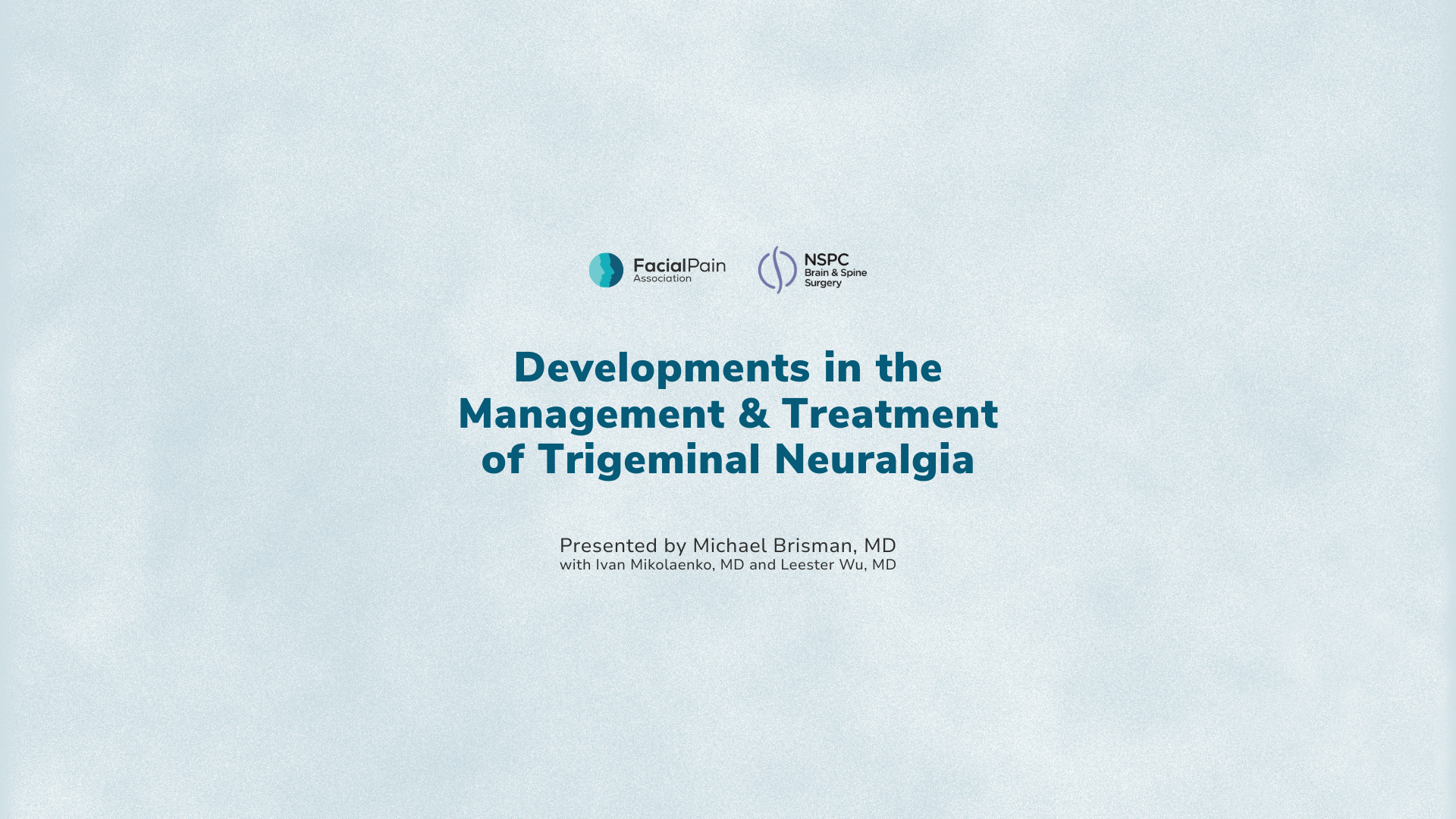By Jeffrey A. Brown, MD
In 1908, a physiologist first described something called the “oculocardiac reflex” – push on your eyeball and your heart rate drops. As it turns out, this was the first understanding of the role that the trigeminal system plays in the involuntary functions of body elements that we cannot consciously control. The eyeball is innervated by the trigeminal nerve. Irritate it, and things happen in your body, not just in your face. Irritate it enough, and your heart can even (briefly) stop beating.
This is an “autonomic” function.
First, let us define the term “autonomic”:
Autonomic refers to the involuntary functions of the nervous system – the things we cannot consciously control. It relates to the working elements of the internal organs of our body – the muscles of the heart, blood vessels, stomach, intestines, functions of the lungs, sweat and salivary glands. The autonomic nervous system also aids in digestion, relaxation, and even “instinctual” emergency responses to injury or potential injury.
Any form of injury, even minor irritation, to the trigeminal peripheral branches in the face will have some autonomic consequence, because the wiring of the trigeminal nerve is intimately intertwined with the autonomic nervous system within the brainstem.
It is the brainstem that runs the unconscious activity of the body. Think of it as our body’s “operating system,” like that of your iPhone or computer. If it gets reprogrammed, your phone can work better, but if it is damaged, things can go literally “haywire” (Haywire – the thin, too flexible wire used to hold bales of hay in the fields. Left alone, the wires tend to get intolerably tangled).
One principle:
The more intense the injury to the trigeminal system, the more widespread the effects even down to the control of your digestive system.
Why?
The trigeminal nerve nucleus in the brainstem has connections to other nuclei that connect to the vagus nerve. The vagus nerve is appropriately named “vagus” because it has “vague” or diffuse (autonomic) effects throughout the body. These interconnections go through another nucleus called nucleus solitarius. A nucleus is the energy center of each nerve and the cable that emerges and enters into it. The output of the vagus nerve can be parasympathetic or sympathetic. One excellent way of understanding the difference is to use the rhyming phrases “rest and digest” and “feed and breed” to describe the parasympathetic plethora of functions. Some examples of parasympathetic functions: the heart rate is slowed and airway muscles in the lungs are tightened reducing the amount of work the lungs must do. The problem is that with trigeminal nerve injury the response in the body then depends on the unpredictable mix of stimulating and inhibiting nerve channels that are turned on.
Disease can do this as well. One way is by causing inflammation.
Is this really a different entity or is it another in the confusing plethora of manifestations of trigeminal nerve injury? From the discussion above one could understand it to be the latter.
Trigeminal neuralgia is that, too.
Trigeminal neuralgia is better understood, in my opinion, as a single form of “trigeminal neuropathic pain,” meaning trigeminal nerve injury. It can manifest itself with short bursts of short circuits – stabbing pain; or it can be felt by constant pain – often burning; or a mixture of the two. Usually intermixed with the neuropathic (electrical, nerve injury pain), there can be a residual aching pain. Aching pain is not nerve pain. It is what is called “nociceptive” pain. This is the type of pain transmitted to the brain by nerve endings in response to injury of the body. The pain felt in the face from the neuralgia attacks, through another pathway in the that nucleus solitarius, can evoke this different form of pain as a secondary response.
In summary, the trigeminal nerve is intimately intertwined with the autonomic system of the body, and as such, any disease or injury to the nerve will cause an autonomic response that can be something so seemingly innocuous as a “red face,” or possibly full cardiac arrest. The difference is in the severity.









